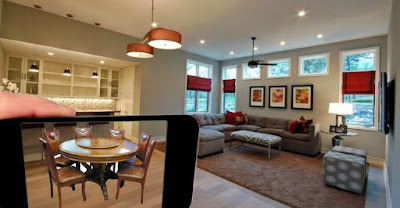Categories of Augmented Reality
The implementation of augmented reality varies on the basis of its purpose and
application. Depending on the application, the use devices such as sensors and
cameras as well as concepts such as projection, reflection and processing are
associated. These devices and concepts make the key components of any augmented
reality application.
Let us
look at the different categories of augmented reality development.
- Sensor
Based Augmented Reality
The sensor based augmented reality uses the camera to scan or read visual markers such as QR codes and 2D codes. The sensors recognize the pattern of the markers to read the information stored in them. - Camera
Based Augmented Reality
Applications that use augmented reality for navigation use the camera as well the GPS system of the device. Using such a technology, the user can drive or walk with the help of the mapped directions given by the app to explore a place. - Projection
Based Augmented Reality
Projection and reflection based technology uses light or laser technology to project artificial light onto a real world surface such as a table or a palm allowing human interaction. The differentiation of the projection and altered projection caused by the interaction done by a human is how the projection based technology works. - Processing
Based Augmented Reality
The purpose of the processing based augmented reality technology is to test and check the appearance of a real world place or object with an enhanced view of the same place or object. Such technology is used for Virtual Try Dresses or to try the placement of a piece of furniture in a room.


Gerçekten faydalı bilgiler içeriyor, teşekkürler.
ReplyDelete